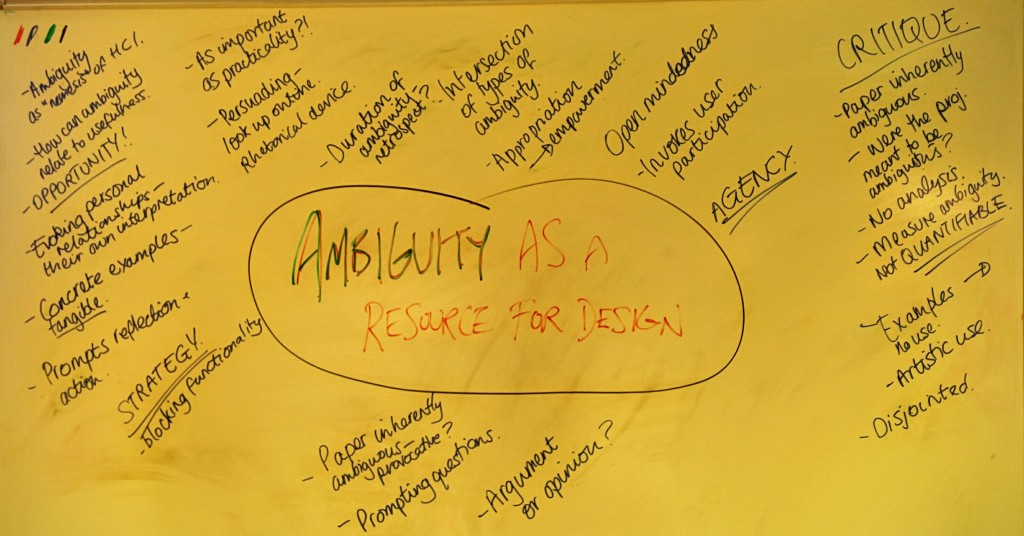Introduction to module
For the first week, there was a general introduction to the HCI for Digital Civics module where John gave an overview of what the module aims to do, what the assignments are, and the general structure of sessions. John also talked to you a little bit about his way into HCI as a way to illustrate the diversity of the field – and why its interdisciplinary nature means it can be both challenging to study but also very exciting.
We also had an initial foray into HCI literature by reading sections of Gaver et al’s ‘Ambiguity as a Resource for Design’ paper from CHI 2003 in small groups. This paper was set as it is one of the most-cited, but also most debated, papers from the recent history of HCI. The purpose of reading this to think carefully and critically about the argument been developed and made by these authors, why they were making it, and in what ways their claims were evidenced. We then collectively mapped out each groups interpretations of the paper:

Tasks for Session 2:
At the end of this first session, you were asked to stay in your groups, and each group was given a different paper to read for the following week:
- Group 1: Nataly, Helen, Eujin, Aare (Staying Open to Interpretation)
- Group 2: Colin, Dan R, Jen, Dan H (Human Computer Interaction as Science)
- Group 3: Reem, Delvin, Janis, Zeinab (The Turn to Practice in HCI)
- Group 4: Jay, Stuart, Taghreed and Aseel (When second wave HCI meets third wave challenges AND Third-Wave HCI 10 Year Later)
There are three tasks for next week’s session:
You should (1) each individually read this over the coming week, following the tips and tactics briefly discussed in this first session, and as detailed in the ‘Close and Critical Reading’ section of the Resources page.
After you have read the paper, (2) write a 300 to 500 word blog post in the form of a critical review / appraisal of the paper (again, use the materials sent around at the start of the module and on the Resources page as an initial guide to help) and upload this onto the website before we meet next week.
Finally, (3) identify one paper from the ACM Digital Library that “exemplifies HCI to you”. Tell us what this paper is at the end of your blogpost, and bring a copy with you next week.
Leave a Reply Cancel reply
You must be logged in to post a comment.